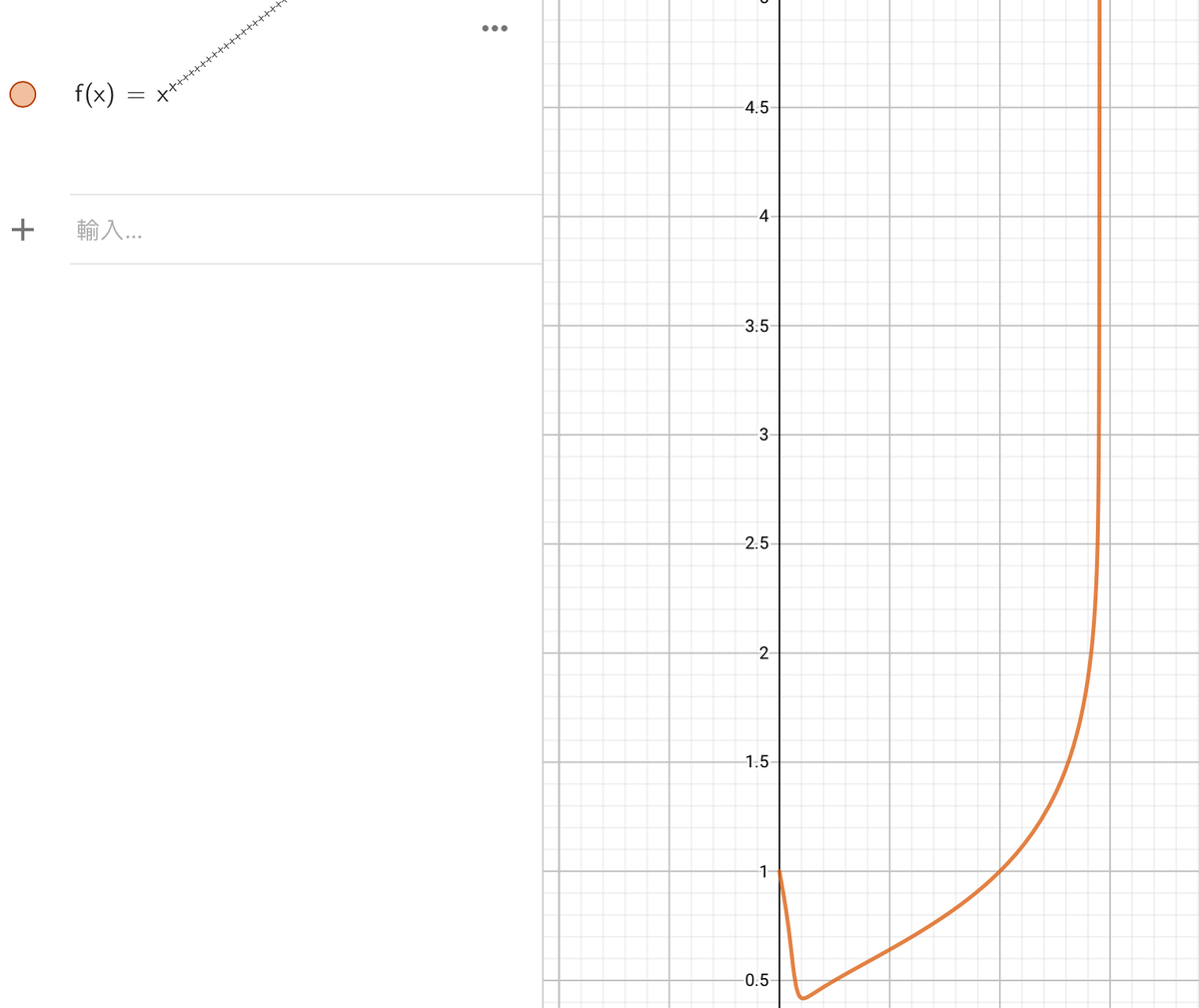Got stuck at a point -2
While working with algebra, I got a very interesting equation to solve which is as follows
\[a^y=y\] \[\Rightarrow a^{a^{y}}=y\] You may continue like this and you will get \[\boxed{\red{a^{a^{a^{a^{a...}}}}=y}}\] Where \(a\) is known, \(a∈(0,e^{\frac{1}{e}}]\), can you solve for \(y\) such that \(y∈(0,e]\)?
Any solution will be appreciated
No vote yet
1 vote
Easy Math Editor
This discussion board is a place to discuss our Daily Challenges and the math and science related to those challenges. Explanations are more than just a solution — they should explain the steps and thinking strategies that you used to obtain the solution. Comments should further the discussion of math and science.
When posting on Brilliant:
*italics*or_italics_**bold**or__bold__paragraph 1
paragraph 2
[example link](https://brilliant.org)> This is a quote# I indented these lines # 4 spaces, and now they show # up as a code block. print "hello world"\(...\)or\[...\]to ensure proper formatting.2 \times 32^{34}a_{i-1}\frac{2}{3}\sqrt{2}\sum_{i=1}^3\sin \theta\boxed{123}Comments
@Chew-Seong Cheong, @Elijah L, @Yajat Shamji, @Mahdi Raza, @Kumudesh Ghosh, @Alak Bhattacharya, @Vinayak Srivastava, @Aryan Sanghi, @Jeff Giff, @Marvin Kalngan
Interestingly if we let
aaaaa=2 a2=2⟹a=2
And again
bbbbb=4 b4=4⟹b=2
Now, since a=b, ⟹aaaaa=bbbbb⟹2=4?
Does this mean 2=4?
Log in to reply
Aren't those two two different equations. So, you can't equate both of them, ain't it?
Log in to reply
Rethink, i have edited my comment a bit
@Zakir Husain
well all values of a where a∈(1,ee1) follow this behaviour
Log in to reply
Yes
@Mahdi Raza - It is also a math failure, a potential Math also fails! -3. Well, what could be it's explanation?
I remember seeing this question somewhere. The answer said that it is limited for some values of a or b, but I don't remember much.
This might help :) The number of x’s are finite, yet the graph starts to approach a straight line already.
The number of x’s are finite, yet the graph starts to approach a straight line already.
Log in to reply
The straight line at the end is x=ee1≈1.444667861009766
Log in to reply
Oh! That is interesting :)
@Jeff Giff, For infinite x you should graph y=xy instead of this poor approximation, because this will give you the exact graph.
Log in to reply
Oh, I never thought of that! Silly me :)
@Jeff Giff, how you put this image in the comment?
Log in to reply
First try posting the image in a question. Then copy the link form. Finally paste it onto the comment :)
What i do is go to a previous solution, insert media, copy the location code, and paste it in the comments. It is tedious i know
@Jeff Giff, see the graph below:
I only want a formula which relates all the x and y of the points of xy=y in the rectangle formed by the x−axis,y−axis,y=e,x=ee1. As I said in my comment
Log in to reply
Oh. I’ll try to help:)
Maybe it’s related to [(x+a)n+b]×c
@Mahdi Raza- Explanation to the contradiction
Let x=yyy...⇒x=yx assuming x=0 y=xx1
Now the maxima of xx1 is ee1 and for any x∣x∈(e,∞), y∈(1,ee1).
And for any x∣x∈(1,e), y∈(1,ee1)
And in your case, applying above statement a=221 and b=441⇒a=b⇏2=4
Log in to reply
- If you haven't read the note above and the comment above yet, then kindly read them first.
@Chew-Seong Cheong, @Justin Travers , @jordi curto , @Yajat Shamji , @Mahdi Raza , @Kumudesh Ghosh , @Alak Bhattacharya , @Vinayak Srivastava , @Aryan Sanghi , @Jeff Giff , @Marvin Kalngan .Now a new problem arises, if x1x11=x2x21;x1=x2 then what is the relation between x1 and x2 ?
Log in to reply
x1,x2 are the x values of the intersection between xx1 and y=x1x11.
Log in to reply
The graphs are intersecting at (1,1), that is when x1=1,x2=1, in that case x1=x2. I'm talking about the case
When x1x11=xx21 but x1=x2. For example when x1=4;x2=2; then 221=2=441 but 2=4
Log in to reply
But the graphs in the pic aren’t the ones that I mentioned:)
I just meant to say that the graphs in the picture are symmetrical along x=y.
Also, x1 is on the interval [0,e) while x2 is on the interval (e,∞] for x1=x2 :)
Two diferents values has same image :
other ejemple : f(x) = x^2
x= -2 and x= 2 => f(x) = 4
Relation is f inverse f(x) = x
for x= 4 => f(x) = + 2 and -2
@Jeff Giff- See here, I have already written that
Solution will exist only when a∈(0,1). Now, you can draw graphs for y = ax and y = x and find the solution.
Log in to reply
solution exists if a∈(0,ee1), I recalculated it just now
Anything wrong in this graph?
Log in to reply
@Vinayak Srivastava - Nothing is wrong with the graph but, it is only for the case a=1.4 I want a general formula for the solution for any a∈(0,ee1)
@Aryan Sanghi- I am searching for a formula which gives value of y for every value of a where a∈(0,ee1)
Log in to reply
a∈(ee1,ee1)
Log in to reply
Well the ee1 comes by taking the maxima of the function x1/x, but the minima is not 1/ee. If you know calculus and wanted proof for the given argument, then please comment.
Log in to reply
Sorry I haven't learned calculus
Yes, you are right. I got same value as yours.
@Chew-Seong Cheong, @Justin Travers, @jordi curto, @Yajat Shamji, @Mahdi Raza, @Kumudesh Ghosh, @Alak Bhattacharya, @Vinayak Srivastava, @Aryan Sanghi, @Jeff Giff, @Marvin Kalngan. For every a∈(1,ee1) there exists 2 solutions for each a, one of them will be y such that y∈(1,e). I'm only considering that as solution for 1<a<ee1, for 0<a<1 there is only one solution for each a. Can anyone find any formula for these solutions where (0<y<e). I have also edited the note a bit, because I don't need y>e
Why mention me? @Zakir Husain. I cannot do this stuff - please remove my mentions...